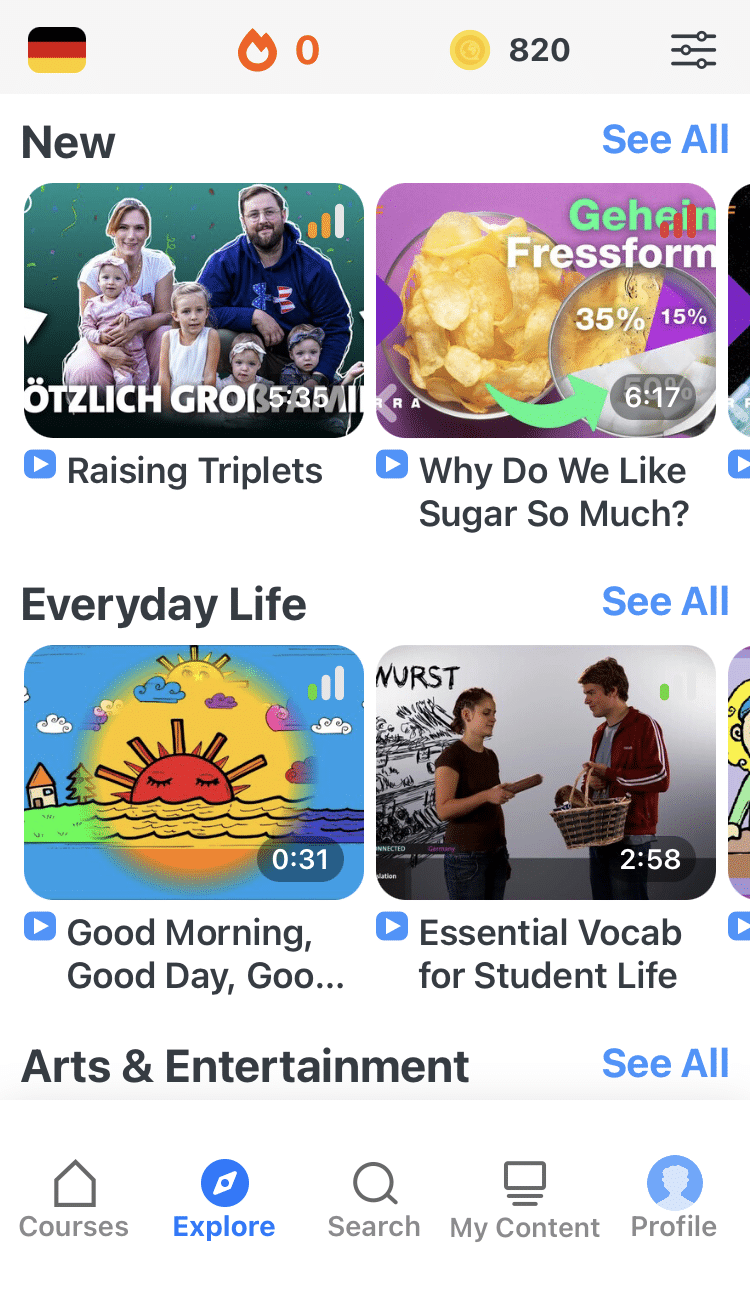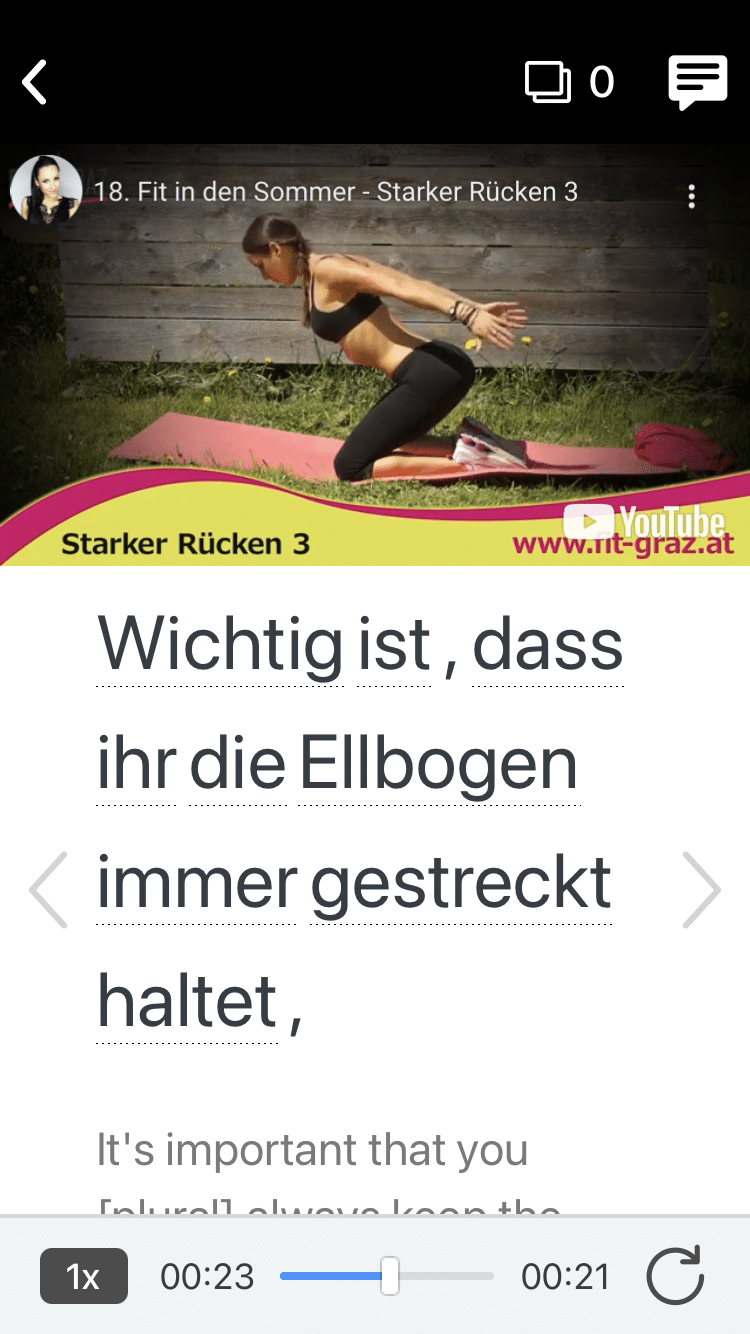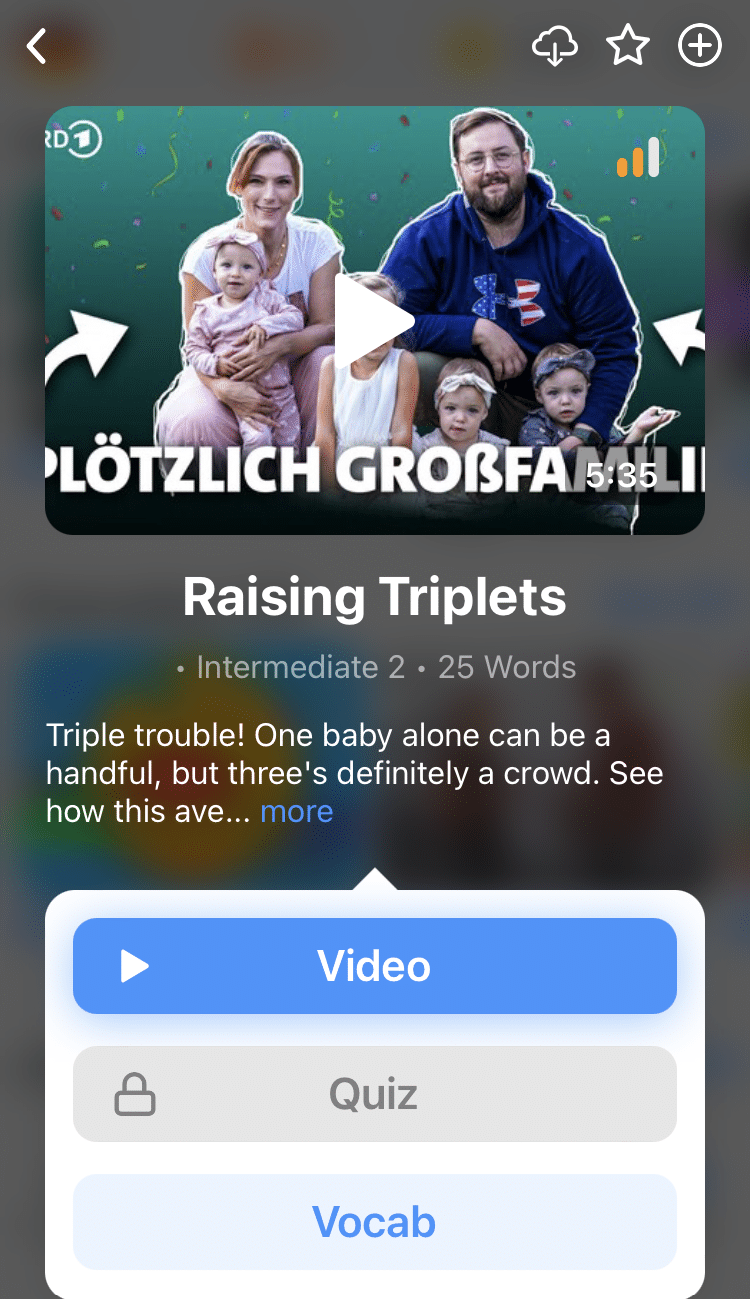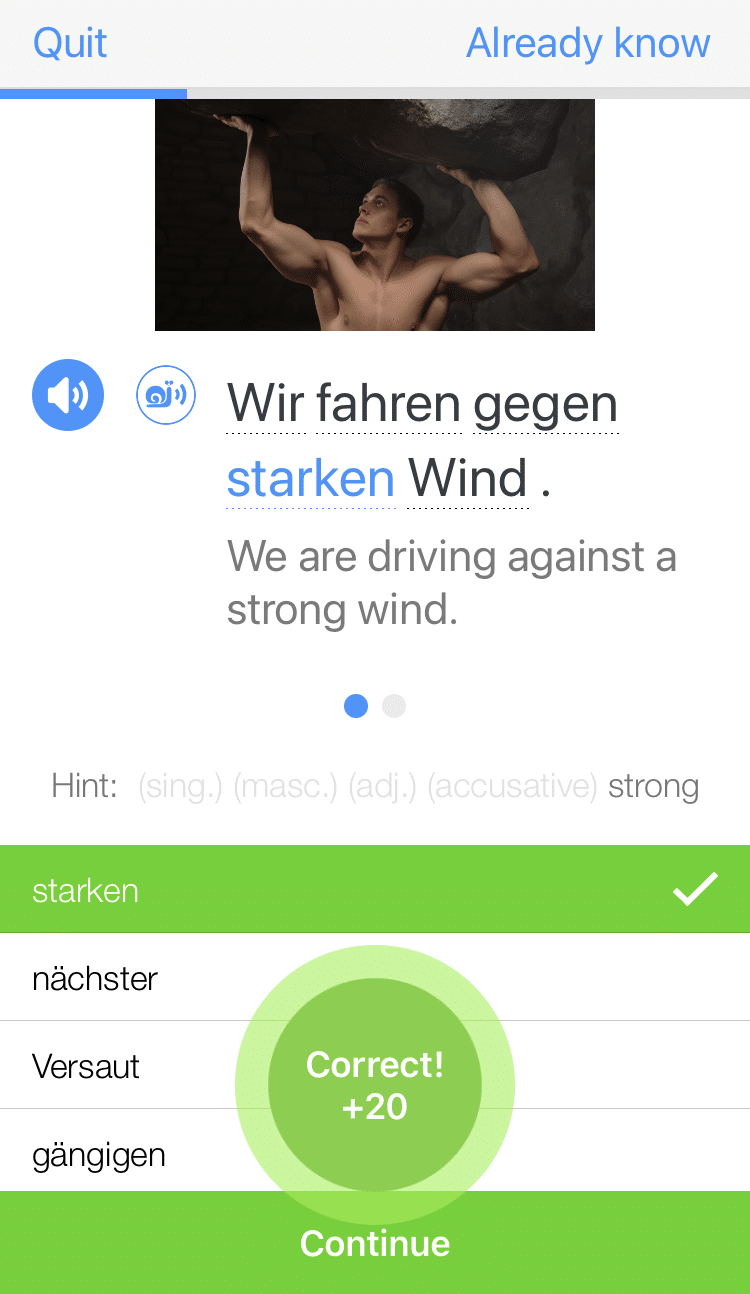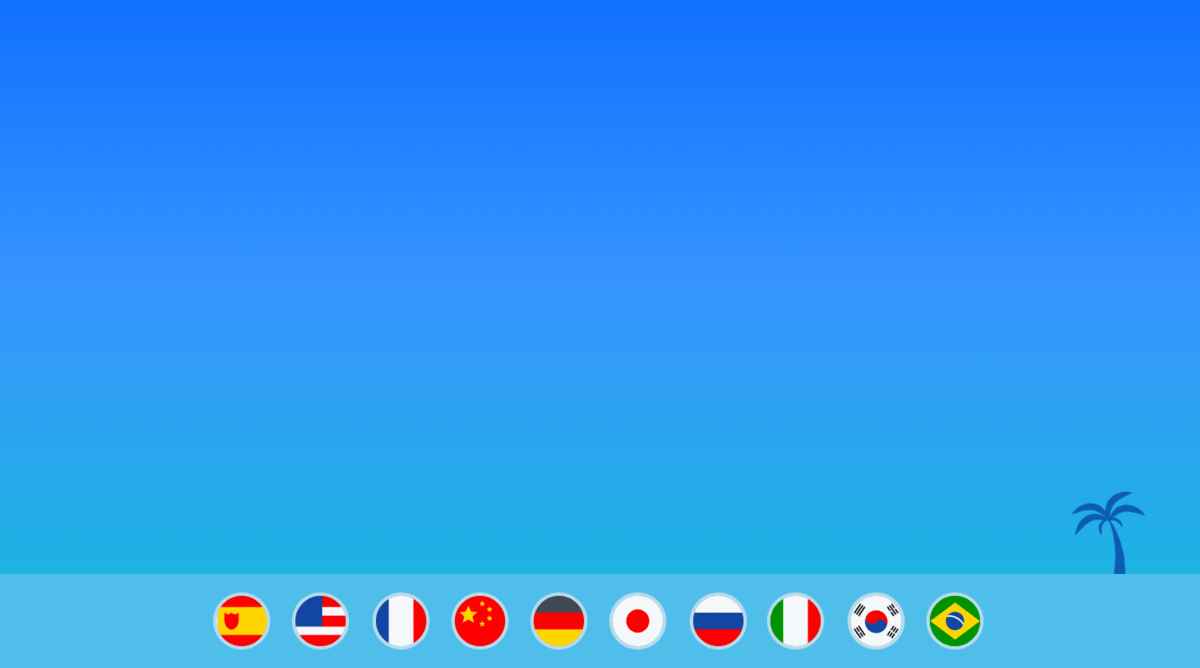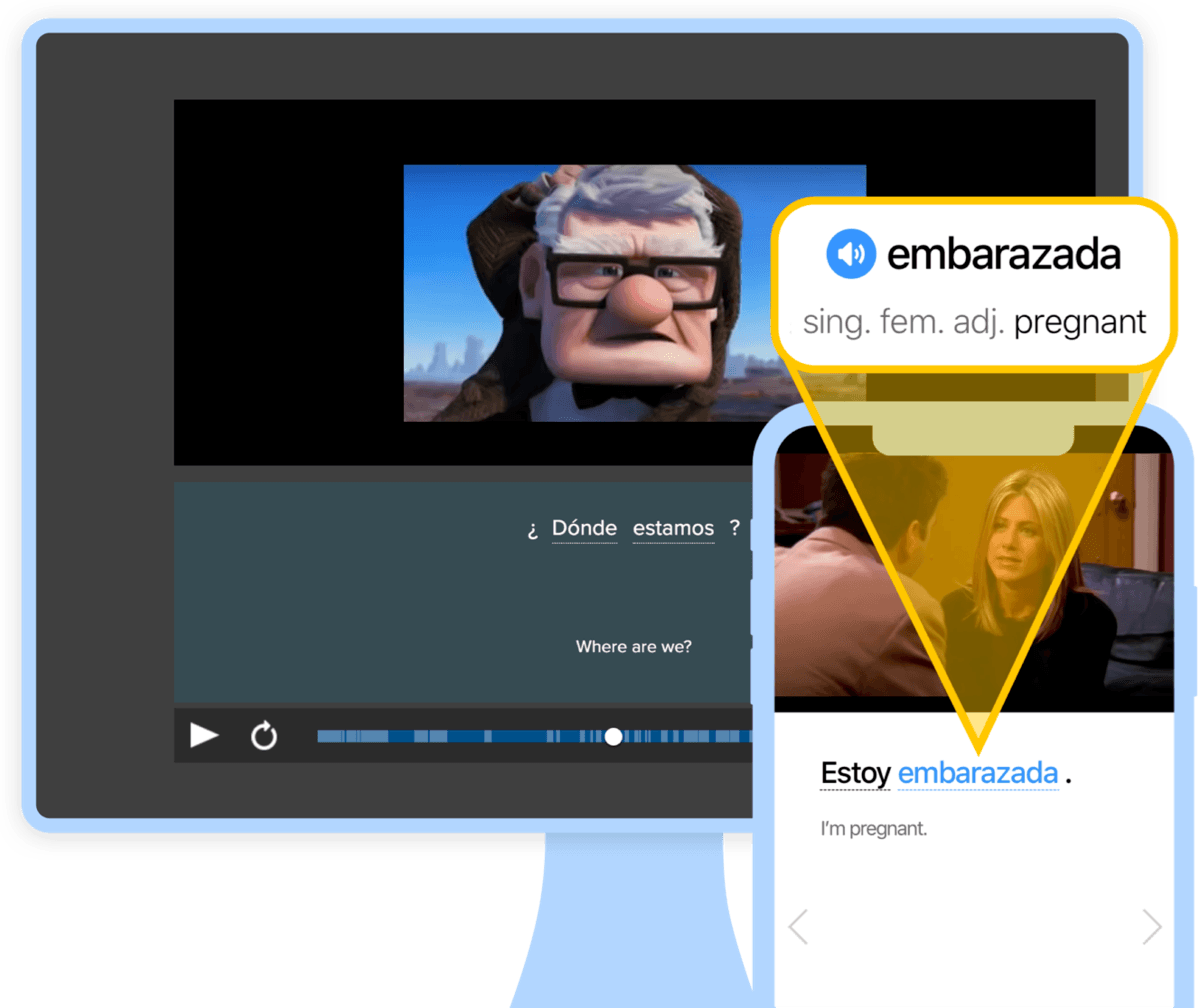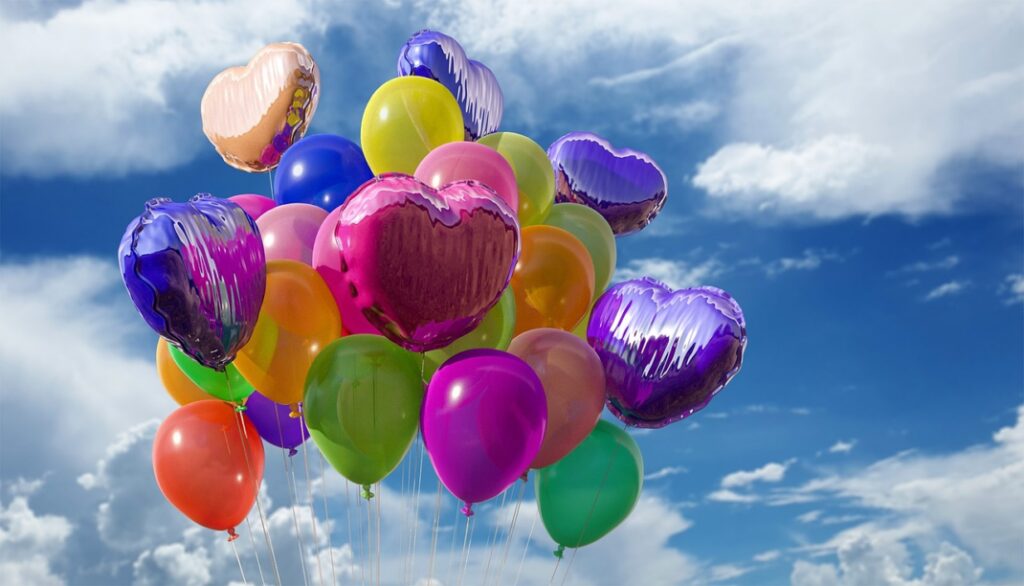
Colors in German
Can you imagine a world without colors? It’d be pretty drab, don’t you think?
Not only are colors a basic descriptive tool in German, but this is also one of the first topics any learner studies, along with the alphabet and numbers.
We’re going to share creative ways to learn the basic colors in German, along with 20 fun German idioms (and some quite unusual ones) involving colors.
Let’s add some color to your German!
Contents
- The Key Colors in German
- 20 Fun and Unusual German Color Sayings
- 1. Bei Mutter Grün
- 2. Alles im grünen Bereich
- 3. Das blaue vom Himmel versprechen
- 4. Blauer Montag
- 5. Er ist blau
- 6. Ins Schwarze treffen
- 7. Der rote Faden
- 8. Da kannst du warten bis du schwarz wirst
- 9. Schwarzfahrer
- 10. Bis zum Weißbluten
- 11. Eine weiße Weste haben
- 12. Auf keinen grünen Zweig kommen
- 13. Jemanden grün und blau Schlagen
- 14. Alles grau in grau sehen
- 15. Durch eine rosa Brille sehen
- 16. Gelb vor Neid
- 17. Ach du grüne Neune!
- 18. Du wirst dein blaues Wunder erleben
- 19. Das ist dasselbe in Grün
- 20. Das ist graue Theorie
- How to Practice German Colors
- And One More Thing...
Download: This blog post is available as a convenient and portable PDF that you can take anywhere. Click here to get a copy. (Download)
The Key Colors in German
“Color” in German is die Farbe in singular form and “colors” is die Farben in plural form.
Without getting into complicated shades and paint-store blends, here’s a list of the basic colors in German accompanied by their pronunciations.
Red — Rot
Pink — Rosa
Orange — Orange
Yellow — Gelb
Green — Grün
Blue — Blau
Light blue — Hellblau
Dark blue — Dunkelblau
Purple — Lila
Gray — Grau
Brown — Braun
Beige — Beige
White — Weiß
Black — Schwarz
Notice that many of them are similar to their English translations (except for purple, which is a notoriously rebellious color).
20 Fun and Unusual German Color Sayings
There’s no better way to sound like a native and impress your friends than to throw around the idioms the Germans say themselves. Both for your amusement and education, here are 20 fun ways the Germans use colors in idioms.
1. Bei Mutter Grün
Meaning: To be in nature
Literal Translation: With Mother Green
What better way to pass the day than to be outdoors? Although it can’t be confirmed, it’s suspected that Mother Green is a cousin to the English Mother Nature.
2. Alles im grünen Bereich
Meaning: Everything is fine
Literal Translation: Everything in the green area
On old fashion gauges, the arrow points in the green section when the machine is working fine, and in the red when something is wrong. Germany, a nation fond of order, likes it when things are in the green.
3. Das blaue vom Himmel versprechen
Meaning: To promise the moon
Literal Translation: To promise the blue of the sky
The blue of the sky is generally out of reach of human control, and the same goes for the moon and other celestial objects. This phrase means to promise something that is impractical or even impossible.
You can also use this phrase for intentionally dishonest statements: das Blaue vom Himmel lügen (to lie through your teeth).
4. Blauer Montag
Meaning: A Monday off from work
Literal Translation: Blue Monday
While English speakers get the “Monday blues,” a blue Monday in German is something to look forward to. However, don’t tell your boss, because usually it means that you’re playing hooky.
5. Er ist blau
Meaning: He is drunk
Literal Translation: He is blue
Apparently, there are lots of words for “drunk” in every language.
6. Ins Schwarze treffen
Meaning: To hit the mark
Literal Translation: To meet in the black
Because profits were generally recorded in the books with black ink, to be in the black is where you’d want to be (or green, if you remember #2).
7. Der rote Faden
Meaning: The common thread / central theme
Literal Translation: The red thread
Now when you hear Germans speaking about the red thread, you know it’s not about clothing manufacturing.
8. Da kannst du warten bis du schwarz wirst
Meaning: You can wait till the cows come home
Literal Translation: You can wait there until you are black
Presumably, it’s not going to happen. Therefore, it’s best not to wait too long. Also note that the informal form of “you” (du) is used in this example. If you’re looking to insult a stranger or a superior, it’s more grammatically correct to say Sie.
9. Schwarzfahrer
Meaning: fare dodger
Literal Translation: black rider
Although a black rider sounds like something awesome out of an action movie based on a comic book, it’s actually someone who gets on the trains or trams without paying for a ticket.
There’s even a separable prefix verb describing this action: schwarzfahren.
10. Bis zum Weißbluten
Meaning: Bled dry / through the nose (concerning money)
Literal Translation: To bleed white
This is a simple variation from the English concept… at least white blood is probably easier to clean up.
Das Volk muss Steuern zahlen bis zum Weißbluten. (The people have to pay taxes through the nose.)
11. Eine weiße Weste haben
Meaning: To have a clean slate (be innocent)
Literal Translation: To have a white vest
Much like the tradition of the wedding dress and the clothing of the good guys in fairy tales, white historically represents innocence and purity. Anyone wearing a white vest must simply be a good guy.
12. Auf keinen grünen Zweig kommen
Meaning: To not reach a goal / to not have luck or success
Literal Translation: To not arrive on a green branch
We’re looking at a very poetic way of indicating failure. Goethe would be pleased.
13. Jemanden grün und blau Schlagen
Meaning: To beat someone black and blue
Literal Translation: To beat someone green and blue
If you saw a man green and blue, it would be obvious that he got it pretty bad.
14. Alles grau in grau sehen
Meaning: To be pessimistic
Literal Translation: To see everything gray in gray paint
If everything were gray, there would be fewer colors to have to learn in German—but it still doesn’t make for a happy existence.
15. Durch eine rosa Brille sehen
Meaning: To be overly optimistic or nostalgic
Literal Translation: To look through pink glasses
On the other hand, everything looks better in pink hue.
16. Gelb vor Neid
Meaning: To be envious
Literal Translation: Yellow with envy
There might be some color-idiom disparity between English and German on this one. Still, I suppose it makes just as much sense to be yellow with envy as it does to be green with it.
17. Ach du grüne Neune!
Meaning: Good grief!
Literal Translation: Oh you green nine!
There must be a reason for such a strange expression, but so far it’s a well-kept secret.
18. Du wirst dein blaues Wunder erleben
Meaning: You’ll get a nasty surprise
Literal Translation: You’ll experience your blue wonder
Although experiencing a blue wonder sounds like a fun thing to happen on any given day, apparently it isn’t. At least now you can recognize when a German is threatening you via idiom.
19. Das ist dasselbe in Grün
Meaning: It makes no difference / That’s six of one and half a dozen of another
Literal Translation: That’s the same in green
Like we said before, if it’s in the green, it’s all good, and the same, apparently.
20. Das ist graue Theorie
Meaning: That’s mere theory
Literal Translation: That’s gray theory
Something that’s gray theory (gray because it comes from the brain, which is gray?) isn’t necessarily applicable in an everyday sense, or at least it’s something not proven.
How to Practice German Colors
The unique expressions above make German colors a bit more memorable, but here are a few more ways to enhance your German color studies.
T-shirt watching
Instead of reading the names of colors off a piece of paper, look up and name the colors of the shirts of people around you. This is a great way to pass time in a public place, such as a doctor’s office or on a bench outside a train station.
You can even put it into a sentence:
Er trägt ein schwarzes T-Shirt. (He’s wearing a black T-shirt).
And, best of all, it gives you ample excuse to do some people-watching.
Multimedia flashcards
One of the most effective ways to remember German colors fast would be to make flashcards for them. But not just your usual flashcards—imagine flashcards with pictures of each color, plus audio and video for an immersive experience.
You can get this set up quickly with FluentU, which lets you look up German words and then turn them into multimedia flashcards with a click.
FluentU takes authentic videos—like music videos, movie trailers, news and inspiring talks—and turns them into personalized language learning lessons.
You can try FluentU for free for 2 weeks. Check out the website or download the iOS app or Android app.
P.S. Click here to take advantage of our current sale! (Expires at the end of this month.)
Ich sehe… (I see…)
Instead of playing the classic game “I Spy,” put a German twist on it. With a friend, say Ich sehe etwas Grünes (I see something green), or whatever the color may be. It’s also a handy chance to practice other vocabulary in German while guessing:
Ist es das Gras? (Is it the grass?)
Ist es der Busch? (Is it the bush?)
List-eria
We all know the “Categories” game, right? It’s the one where everyone tries to list a type of car or a brand of clothing, and the first person who can’t come up with an item in the category loses. Why not turn that concept into a beneficial act of language acquisition?
Go around the circle (or back and forth, if there’s just the two of you), and try to name as many things of the same color as possible. For example: Der Himmel ist blau (The sky is blue), Wasser ist blau (Water is blue), etc.
You can even keep points to add a competitive edge.
There it is: everything you need to add some color to your German language learning!
You’ll arrive on that green branch in no time. Good luck!
Download: This blog post is available as a convenient and portable PDF that you can take anywhere. Click here to get a copy. (Download)
And One More Thing...
Want to know the key to learning German effectively?
It's using the right content and tools, like FluentU has to offer! Browse hundreds of videos, take endless quizzes and master the German language faster than you've ever imagine!
Watching a fun video, but having trouble understanding it? FluentU brings native videos within reach with interactive subtitles.
You can tap on any word to look it up instantly. Every definition has examples that have been written to help you understand how the word is used. If you see an interesting word you don't know, you can add it to a vocabulary list.
And FluentU isn't just for watching videos. It's a complete platform for learning. It's designed to effectively teach you all the vocabulary from any video. Swipe left or right to see more examples of the word you're on.
The best part is that FluentU keeps track of the vocabulary that you're learning, and gives you extra practice with difficult words. It'll even remind you when it’s time to review what you’ve learned.
Start using the FluentU website on your computer or tablet or, better yet, download the FluentU app from the iTunes or Google Play store. Click here to take advantage of our current sale! (Expires at the end of this month.)

